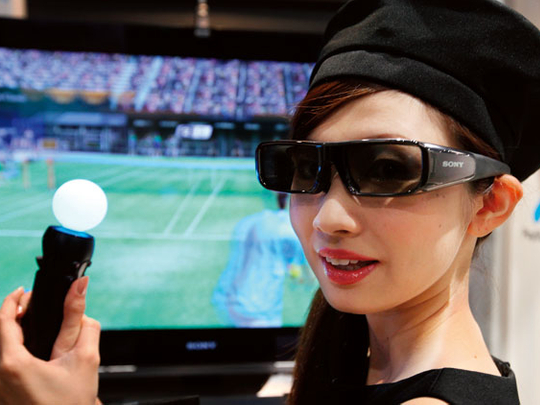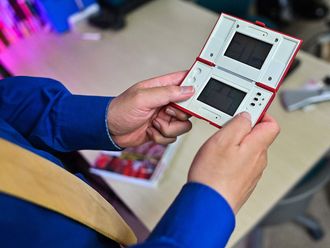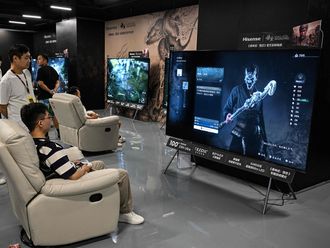
The global gaming industry is jumping on Hollywood's 3-D bandwagon but the bet is risky as consumers appear reluctant to shell out for the necessary screens and glasses, insiders say.
At the start of Gamescom, Europe's biggest trade fair for interactive games and entertainment in the western German city of Cologne, market leaders were trotting out new creations with images that appear to leap off the screen.
Driving a racing car on a three-dimensional track while parked on the sofa or playing tennis and seeing the ball spin in the air in front of you in the comfort of your living room - Japanese behemoth Sony was showing off how it is transforming the gaming experience.
"We already have a leading market share in 3-D TV," said Kazuo Hirai, CEO of Sony Computer Entertainment, referring to a small but growing segment of the multi-billion-dollar market.
"Still the number of units has to increase a lot. In order for that to happen, we need to have exciting software, broadcast TV in 3-D, motion pictures available in 3-D - on Blu-ray, and also video games."
Consumer electronics makers are aiming to ride a wave of interest in 3-D technology thanks to recent movies such as the sci-fi blockbuster Avatar.
Sony expects 10 per cent of the TVs it sells this year will be 3-D-compatible and is working on technology that does not require glasses.
Industry experts say a wide array of game titles is crucial to convincing consumers to invest around 1,500 euros ($1,935) in a compatible screen and a pair of 3-D glasses.
Hirai said games were easier to develop than movies in 3-D because everything is computer-generated in the first place.
But a 3-D game costs about 20 per cent more to produce than a standard one, said Olivier Wolff, senior vice president of Warner Bros. Interactive Entertainment's international games division, a unit of the Hollywood studio.
He said Warner had also placed 3-D at the "heart of its strategy" but acknowledged that the market would need another two to three years to take off.
Wolff said that by then, one household in ten in major markets would have a 3-D television and that one in five of Warner's games would be in 3-D.
The priority is to develop racing and combat games as they offer the most intense immersive viewing experience, Wolff said, promising new 3-D games for the Lord of the Rings and Mortal Kombat series.
"With the 3-D, we put more attention into the things that are between the player and the camera," said Ed Boon, developer of Mortal Kombat, a wildly popular urban street fighting series.
"You don't want plants in the foreground that will obstruct the gameplay, it's just a question of balance. Because you have to see the game."
Matt Southern, director of development on the 3-D Motorstorm 3 game for Sony, said that game designers were wise not to go overboard with the new technology or risk alienating players, not to mention giving them headaches.
"We have to be very, very careful to test the game and be sure that the 3-D is functioning well in terms of gameplay and for the visuals," he said.
"You have to find a balance between what you can imagine and what would be comfortable and enjoyable." Many experts think consumers are unlikely to rush to buy the premium-priced 3-D TVs due to the need for special glasses and because many people have already upgraded to high-definition sets in recent years.
Japanese gaming giant Nintendo has opted to develop its own technology and is building a new machine, the 3-DS, capable of producing 3-D images on a small screen that does not require glasses.
US competitor Microsoft is less enamoured with the possibilities of 3-D and is looking at family-friendly alternatives.
"The equipment is not there yet and we see the glasses as a brake on the development of 3-D," said Benoit Fouillet, a Microsoft Xbox product manager.











